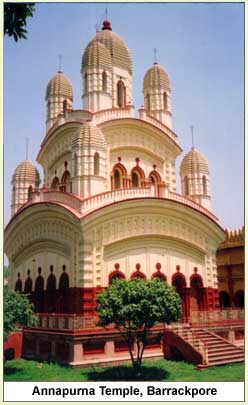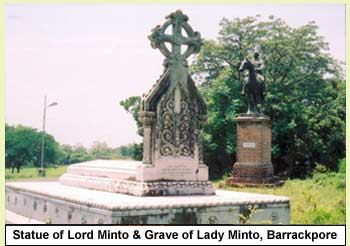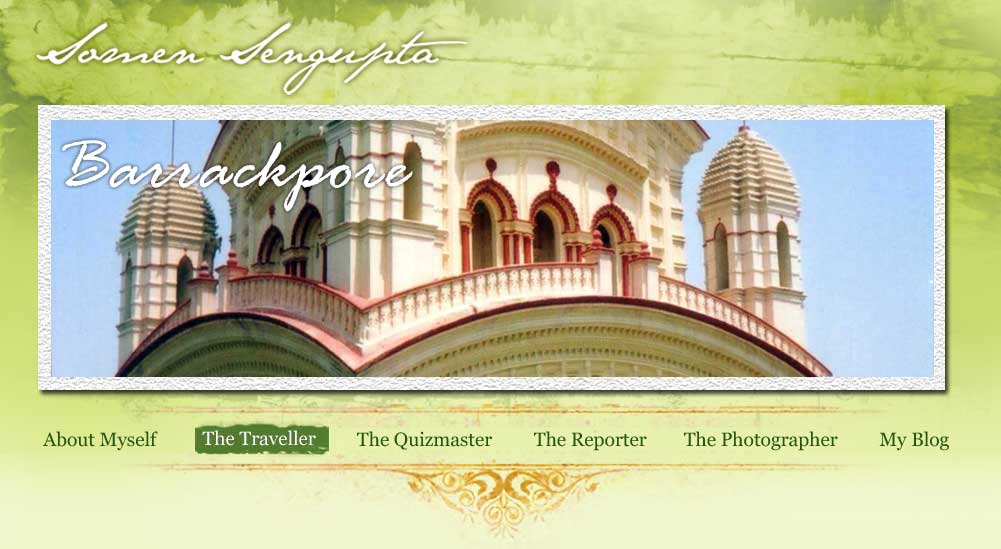|
For many, Barrackpore is only an industrial town. But for those in love with the past, Barrackpore is also a great getaway. And for Aamir Khan fans, it could be Barrackpore: The Rising!
An amazing temple, an 18th century cantonment, old churches and innumerable footprints of British legacy make this place a historical treasure trove.
In 1772, the first military barrack of the country was set up by the East India Company in this town, which was till then known as Chanak. Barrackpore soon became an important base for the British, as the Dutch settled in Chinsurah and the French in Chandernagore, in a scramble for hubs along the Hooghly.The importance of the town grew when Lord Wellesley made it the summer retreat for British officials posted in Calcutta. He was so much in love with the river that he donated Rs 1,000 for the construction of a Danish church at Serampore, on the other bank.
Till 1829, all rulers of India, including Lord Hastings, Lord Auckland, Lord Minto and Lord Lytton, spent their summers at the luxurious Raj Bhavan in Barrackpore.The town further consolidated its position in the history books on March 29, 1857, when a young soldier of Bengal Infantry, named Mangal Pandey, rose in revolt against his British superiors.The tree from which Mangal and another sepoy named Ishwari Pandey were hanged can still be seen in Latbagan. A small memorial has been built near the spot.
Barrackpore houses a Navratna Annapurna temple that is a replica of the Dakshineswar temple. Both temples were built by Rani Rashmoni?s family.The Barrackpore mandir was inaugurated on April 12, 1875, just 20 years after Dakshineswar. Ramakrishna Paramhansa was present at the ceremony.
There are six small Shiva temples on the western side of the Annapurna temple, which is accessible through a huge gate with a lion?s statue on top.According to records, the British had objected to the appropriation of the animal motif, as the lion was the symbol of the Empire. The matter reached court, where the Indians won.
Close to the temple is Gandhighat, perhaps the most popular tourist stop in Barrackpore. A white monument in the memory of Mahatma Gandhi is the main attraction at this landmark by the Hooghly. A Gandhi museum was opened here in 1966.The Temple of Fame is another must-visit. Built by Lord Minto in memory of British soldiers who died during the conquest of Java and Mauritius in the early 19th century, this elegant Greek temple was designed by GR Blane and bears similarities with Isle de France. The pedimented portico is the highlight.

A walk away is the Police Hospital building, once used as a hall of entertainment by the British. Tuscan columns and deep-centre portico characterise this structure.Inside Latbagan is the small but beautiful grave of Lady Canning. She loved Barrackpore so much that she wished to be buried here. A few yards away is a statue of India's last viceroy, Lord Canning.
In the late 1960s, the United Front government, soon after assuming power in Bengal, removed several statues of the British rulers from Calcutta. The city's loss was the town's gain: Latbagan became a veritable storehouse of wonderful sculptures. Few know that the first zoo in Bengal was established at Latbagan. It was later shifted to Alipore. Thus, Barrackpore was once the home of the 250-year-old giant Galapagos tortoise that is now housed in Calcutta zoo. It was brought to Barrackpore by Lord Wellesley in 1800 and was moved in 1875. A 240-year-old banyan tree is yet another attraction of Latbagan.
It is no surprise that this former hub of Europeans is dotted with churches. Among them, the best in terms of architecture are St Bartholomew Cathedral, built in 1831, and St Joseph Church, built in 1856. The bell tower at St Joseph adds grandeur to the simple place of worship. Sadar Bazaar Chapel and Wellesley Church also deserve mention.
A stopover at Surendranath Bonnerjea's house could also be interesting. Mahatma Gandhi visited the house several times.
News you can use:
Barrackpore is just 25 km from Calcutta. It takes an hour by train and around 45 minutes by car to reach there. Special permission is needed to enter the Raj Bhavan garden. Photography is not allowed at Gandhighat. The museum is closed on Wednesday.
Latbagan is also a restricted zone. There are good restaurants in Barrackpore, most of them near the station or opposite Sukanta Sadan. Take a cycle-rickshaw to the tourist spots. Traveller’s tip: bargain hard! |



